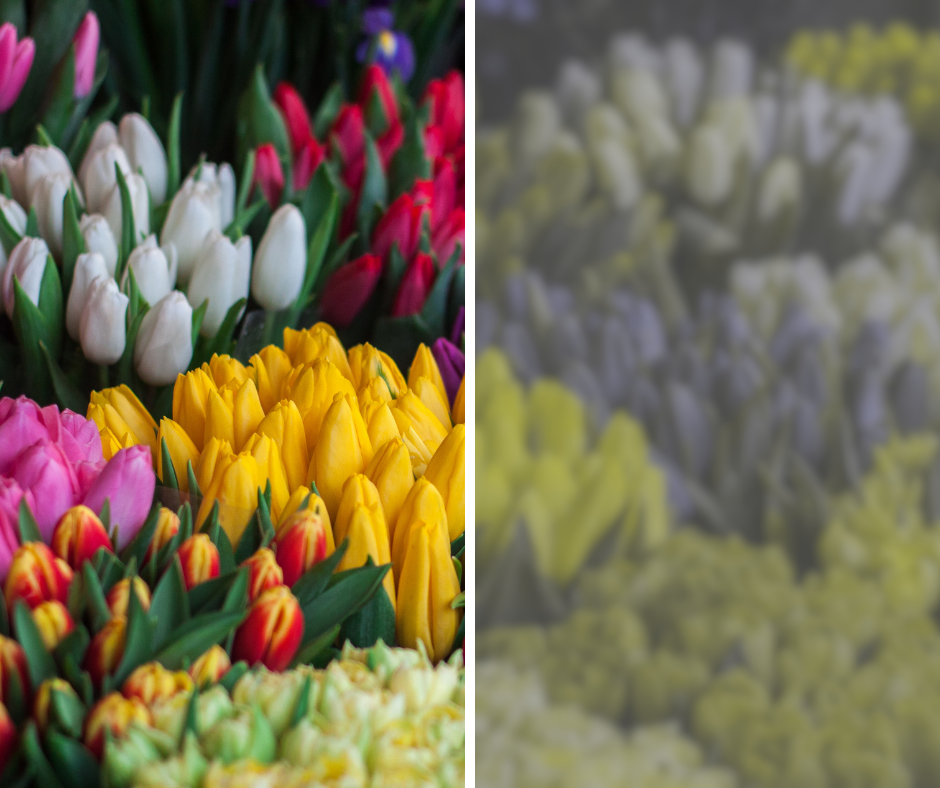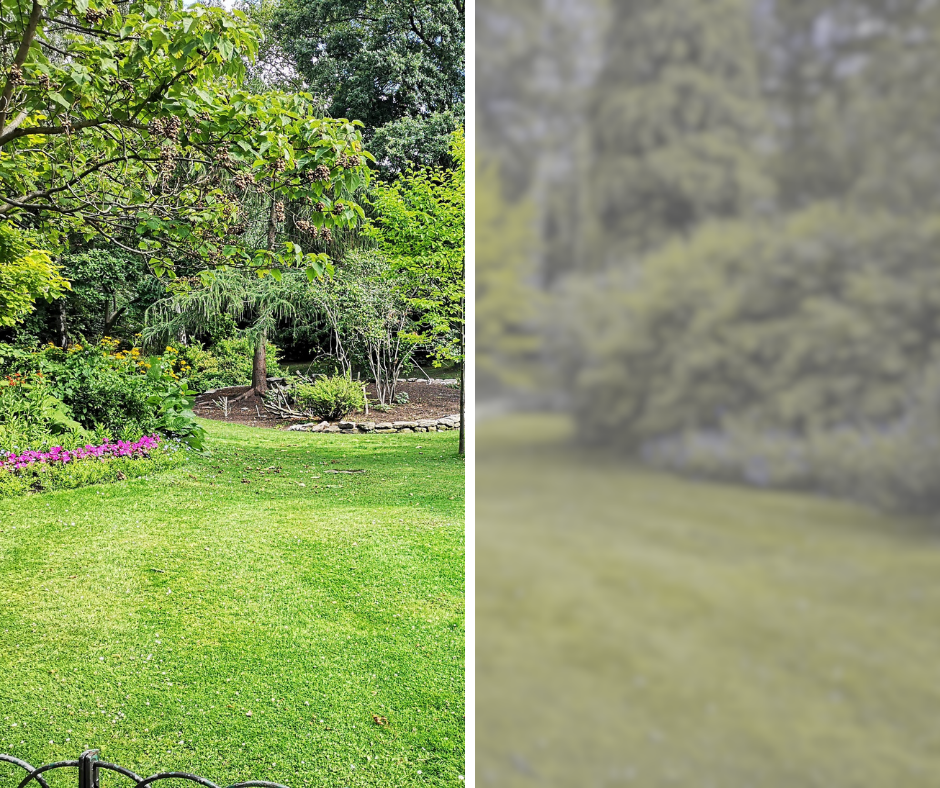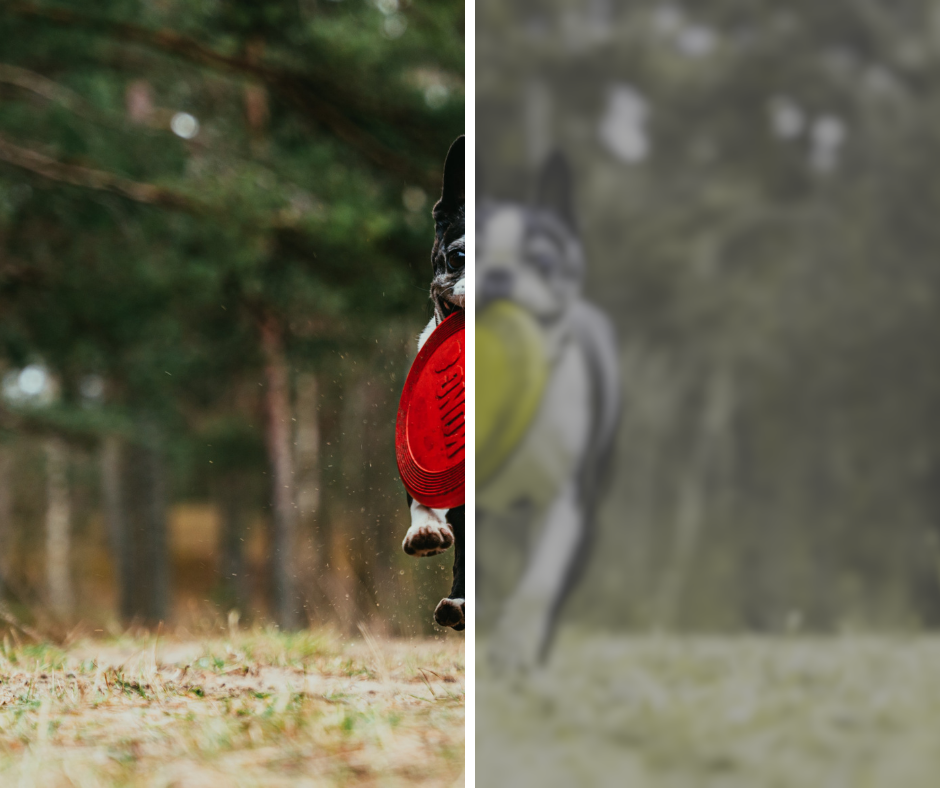Are dogs colour blind?
Ever wondered how much colour your dog can see when they look into your eyes or chase after their favourite toy? Or do you think the popular notion that dogs can only see in black and white is true? Whilst dogs cannot see all the colours of the rainbow like we can, they can see more than just black and white.
How does a dogs vision compare to human vision?
Humans have trichromatic colour vision. The human eye with normal vision contains three colour receptors, called cones each containing a different photopigment. Each pigment is sensitive to a certain wavelength of light. The three cones have peak sensitivities in red, green and blue allowing us to see these colours and all the colours in between. These cones allow us to see the full range of the visible light spectrum and in much richer, vibrant tones.
Dogs have dichromatic colour vision, which means they only have two colour receptors or cones in their eyes. The two cones have peak sensitivities in blue and yellow. Whilst they can see shades of blue or yellow, they cannot interpret the colours red or green. As a result, their vision is mostly a combination of the shades grey, yellow and blue.
Several species of bird, fish, amphibian, reptiles, insects and some mammals have tetrachromatic colour vision. This means they possess four types of cone cells in their eyes. This allows them to see wavelengths beyond those of typical human vision offering even more detail or variety of the colour spectrum.
What colours can dogs see?
Dogs can see shades of blue or yellow, however they cannot interpret the colours red or green. Their vision is mostly a combination of the shades grey, yellow and blue. For example, a red toy would appear yellow grey to a dog. The colours yellow, pink, orange and green would also look like shades of yellow and grey. So, your perfect green lawn would unfortunately appear yellow to your dog. Both blue and purple would be seen in shades of blue.
You can get an idea of the comparison of human versus a dog view of the world with the pictures below. These images were interpreted by Dog Vision Image Processing Tool.
Left: Human view. Right: A dog’s view of the same image, interpreted by Dog Vision Image Processing Tool.
Why do dog’s view the world this way?
Dogs developed their natural senses as nocturnal hunters, allowing them to survive and thrive in the wild. With eyes set more to the sides of their head, dogs have a wider field of vision than humans which allows them to quickly scan their environment. While the human eye contains more cones than dogs allowing us to see more colours, dogs have more rods which are responsible for detecting light and motion. This offers them better vision in low light and helps them to identify moving objects, making it easier to spot prey or know when to flee!
The world is a different place now and many dogs are commonly part of a loving human family. We offer them a complete and balanced diet, so they don’t need to search for food or protect themselves from predators. However, these natural senses remain.
What does this mean for you and your dog?
With this understanding, you may decide to buy toys that stand out for your pooch. For example, buying a blue or purple toy will look quite different against the grassy (yellow in their eyes) background when playing fetch. Similarly, if your dog is having troubles finding a shiny new red toy, it may just be hard to see against a background of similar colours. It’s always helpful to have a greater understanding of your dog and their world too!
Don’t be concerned about your dog’s colour vision as they have a great sense of smell that makes up for it. Dogs have approximately forty times more smell-sensitive receptors than humans. Their nose is an important sense that helps them explore the world as they are constantly inhaling tiny scent particles floating in the air. This explains why your dog can easily retrieve “their” tennis ball in a dog park full of similar balls, due to its smell.
Your dog can hear a much wider range of frequencies than humans too, with their hearing approximately four times more sensitive than ours. This means that there are some sounds that we simply cannot hear that our dogs can.
Whilst your dog cannot see all the colours of the rainbow like we can, they can see a combination of the shades of grey, yellow and blue. Dogs also have a great sense of smell and hearing that supports their vision, giving them a broader picture of the world around them. If you have any questions or concerns about your dog’s vision or health, please contact us on 03 8784 4444.





